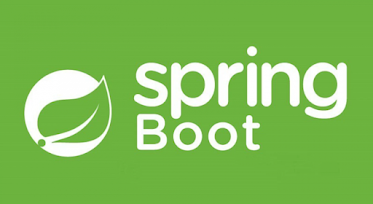Understanding Dependency Injection and IoC in Spring Framework
Dependency Injection (DI) and Inversion of Control (IoC) are core concepts in the Spring Framework. These principles allow developers to create loosely coupled, testable, and maintainable applications by managing object dependencies effectively. In this article, we will explore these concepts, their benefits, and how Spring implements them with practical examples.
1. What is Inversion of Control (IoC)?
Inversion of Control (IoC) is a design principle where the control of object creation and their dependencies is transferred from the program to a framework or container. Instead of the application controlling the flow, the framework manages it. This reduces the tight coupling between classes.
Traditional Approach vs. IoC:
In a traditional application, objects create their dependencies manually:
public class Car {
private Engine engine;
public Car() {
this.engine = new Engine(); // Tight coupling
}
}
With IoC, the container (e.g., Spring IoC container) manages the dependency creation:
public class Car {
private Engine engine;
public Car(Engine engine) {
this.engine = engine; // Dependency is injected
}
}
2. What is Dependency Injection (DI)?
Dependency Injection (DI) is a technique where an object’s dependencies are provided by an external source (like a Spring container) rather than being created within the object. DI is a way to achieve IoC.
Types of Dependency Injection:
- Constructor Injection: Dependencies are provided through the constructor.
- Setter Injection: Dependencies are provided via setter methods.
- Field Injection: Dependencies are injected directly into fields using annotations like
@Autowired.
3. How Spring Implements IoC and DI
Spring’s IoC container is responsible for managing the lifecycle and configuration of beans. It reads configuration metadata (XML, Java-based, or annotations) to know how to create and inject dependencies.
3.1 Using Constructor Injection
With constructor injection, dependencies are passed to the constructor when the bean is created.
@Component
public class Car {
private final Engine engine;
@Autowired
public Car(Engine engine) {
this.engine = engine;
}
public void start() {
engine.run();
}
}
3.2 Using Setter Injection
Dependencies are injected using setter methods.
@Component
public class Car {
private Engine engine;
@Autowired
public void setEngine(Engine engine) {
this.engine = engine;
}
public void start() {
engine.run();
}
}
3.3 Using Field Injection
Dependencies are injected directly into fields using the @Autowired annotation.
@Component
public class Car {
@Autowired
private Engine engine;
public void start() {
engine.run();
}
}
4. Bean Configuration
To enable dependency injection, Spring uses beans. Beans can be configured using XML, annotations, or Java-based configuration.
4.1 XML Configuration
<beans xmlns="http://www.springframework.org/schema/beans">
<bean id="engine" class="com.example.Engine"/>
<bean id="car" class="com.example.Car">
<constructor-arg ref="engine"/>
</bean>
</beans>
4.2 Annotation-Based Configuration
Annotate the classes with @Component, and use @Autowired to inject dependencies.
@Component
public class Engine {
public void run() {
System.out.println("Engine running...");
}
}
4.3 Java-Based Configuration
Use @Configuration and @Bean annotations to define beans.
@Configuration
public class AppConfig {
@Bean
public Engine engine() {
return new Engine();
}
@Bean
public Car car(Engine engine) {
return new Car(engine);
}
}
5. Benefits of IoC and DI
- Loose Coupling: Promotes separation of concerns, making the application more modular.
- Improved Testability: Dependencies can be easily mocked or replaced during testing.
- Flexibility: Changing implementations is easier since dependencies are injected externally.
- Cleaner Code: No need to manage dependency creation manually within classes.
6. Real-World Example
Let’s see a complete example of a Spring application using DI:
@Component
public class Engine {
public void run() {
System.out.println("Engine is running...");
}
}
@Component
public class Car {
private final Engine engine;
@Autowired
public Car(Engine engine) {
this.engine = engine;
}
public void start() {
engine.run();
}
}
@SpringBootApplication
public class Application {
public static void main(String[] args) {
ApplicationContext context = SpringApplication.run(Application.class, args);
Car car = context.getBean(Car.class);
car.start();
}
}
Conclusion
Dependency Injection and Inversion of Control are at the heart of the Spring Framework. By understanding these principles, you can create applications that are modular, testable, and maintainable. Spring’s IoC container simplifies the process of dependency management, allowing you to focus on building robust business logic.
Ready to explore more? Stay tuned for the next article in our Spring Framework Series!






No comments:
Post a Comment